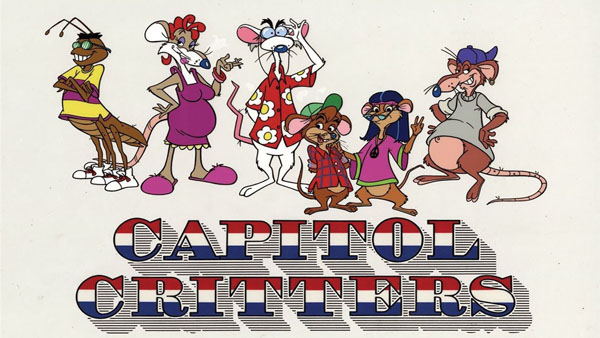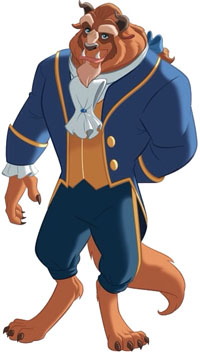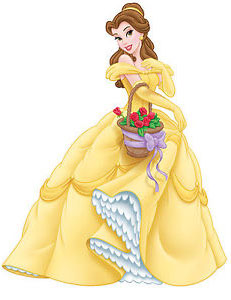
The Roger Rabbit That Almost Was. In the Boston Herald Inside Track column for 1992, author Gary K. Wolf told a reporter that he sold the movie rights to Who P-P-Plugged Roger Rabbit, the sequel novel to his previous book, to Walt Disney Studios and was working on the original screenplay Who Discovered Roger Rabbit?, a prequel to Who Framed Roger Rabbit. He stated that Steven Spielberg had signed on to do both films.
The prequel was planned for release in 1993 with Plugged expected to be released in 1996. Wolf said that the first hardcover edition of his novel published by a division of Random House sold out its first printing completely when it was released in 1991 and a second edition was now on the shelves.
 40,000 Frames. In 1991, it was announced that Group W was pitching a syndicated series that would feature magicians Penn and Teller introducing short animated features and clips. The show was called “40,000 Frames” and was meant to “spotlight break through material from the world’s top animators.”
40,000 Frames. In 1991, it was announced that Group W was pitching a syndicated series that would feature magicians Penn and Teller introducing short animated features and clips. The show was called “40,000 Frames” and was meant to “spotlight break through material from the world’s top animators.”
Richard Sheingold, senior vice president of marketing and sales for Group W said, “The current popularity of animation has created a tremendous hunger for new and exciting programming.”
The Simpsons Secret. In Daily Variety October 15, 1996, Bill Oakley, an executive producer for The Simpsons said, “What I think we’ve proven is that a show can be written at an adult level and still be embraced by kids. But children like cartoons of any sort. They’re the icing on the cake. The trick is making adults laugh.”
Fender Bender 500. According to The Daily News, July 23, 1990, actor Shadoe Stevens, who was providing the voice of the raceway announcer in Hanna-Barbera’s upcoming Fender Bender 500 (one of the segments on the syndicated series Wake, Rattle and Roll and a sort of revival of Wacky Races but with characters like Yogi Bear and Huckleberry Hound from the H-B library) said, “the hardest part of doing the show is trying to keep from laughing while we’re taping it. To sit with some of these legendary voices and watch their faces controt and twist and pinch while they’re acting out the characters is an amazing experience. (Those actors included Paul Winchell, Greg Burson and Don Messick.)
“My character is a high pitched frentic parody of a number of great announcers of our day…either a cross between Don Pardo and Phil Rizzuto or Johnny Cash and Mr. Ed.”
Marc Davis’ Opinion. From the New York Times May 19, 1996, animator Marc Davis said, “Sometimes I look at the animals done in The Lion King (1994) for example and compare them to the animals in Bambi (1942). The animals in Bambi had bones and muscles in them. Their faces work. I do not find the same elegance in The Lion King but there is a learning process going on.”
Capitol Critters. In the L.A. Daily News for January 16, 1992, co-producer of the new prime time animated series Capitol Critters Nat Maudlin (the son of Pulitzer Prize winning cartoonist Bill Mauldin whose earliest entertainment job was as a production assistant to Chuck Jones) said about his show, “The kind of thing we’re going after here is something that’s really lushly drawn. When I was a kid, I loved going to Disney movies more than anything, because they were drawn so well, I believed in them. That’s really what we’re trying to do in this show, to create an environment that’s real.

“With any satire that we do, the topics we choose have got to be what are referred to in the political cartooning business as ‘evergreens’. They’re issues that will always be around. We can’t do anything topical because one script I wrote a year and a half ago and it just got finished. Right now, we’re replacing the Gorbachev jokes that were written because they’re all gone.
“We will do a special election episode. While there’s an election going on upstairs, there’s also one going on downstairs among the critters. I’m going to write two separate endings for the one upstairs and have both of them animated. Especially these days we need to be protected.
“I want to keep the contact between the critters and the humans as limited as possible. They really have their own world though obviously to an extent, it’s a microcosm of ours.” By the way, President George Bush recorded the voice of the chief executive for one of the installments.
 Keane And the Beast. From the L.A. Daily News November 30th, 1991, animator Glen Keane, the primary animator on the Beast in Disney’s Beauty and the Beast (1991), said, “I don’t think (Disney) has ever done a hero as complex as Beast. In a Disney picture, the hero usually has to battle the villain, and it is an outside battle – he has to overcome the witch or the dragon of somebody. With Beast, the enemy is his own beastly nature, and he has to learn to control it. The real battle is within himself.
Keane And the Beast. From the L.A. Daily News November 30th, 1991, animator Glen Keane, the primary animator on the Beast in Disney’s Beauty and the Beast (1991), said, “I don’t think (Disney) has ever done a hero as complex as Beast. In a Disney picture, the hero usually has to battle the villain, and it is an outside battle – he has to overcome the witch or the dragon of somebody. With Beast, the enemy is his own beastly nature, and he has to learn to control it. The real battle is within himself.
“It was frustrating, because I wanted to animate the incredible turmoil that was going on inside the character and there was no action. All I could do was press harder on the pencil. It was one of those times when you want to crawl in there and be that character, but the only way you can express those intense emotions is by subtly tilting an eyebrow or changing the shape of the corners of the mouth. It’s very delicate work, completely the opposite of what you’re feeling inside.”
 Moving Belle. From the L.A. Daily News November 29, 1991, animator James Baxter who led the team on the character of Belle in Disney’s Beauty and the Beast (1991) said, “Animating a pretty character can be a problem because she can become very ugly very quickly. All it takes is a few misplaced lines. We tried to give (Belle) a lot of ballerina movements. Her walk is very much a ballet dancer’s walk. But if you carry that style of movement too far and always keep her little finger extended, she gets prissy and overly feminine. She starts to look like a silent movie star and stops being believable.
Moving Belle. From the L.A. Daily News November 29, 1991, animator James Baxter who led the team on the character of Belle in Disney’s Beauty and the Beast (1991) said, “Animating a pretty character can be a problem because she can become very ugly very quickly. All it takes is a few misplaced lines. We tried to give (Belle) a lot of ballerina movements. Her walk is very much a ballet dancer’s walk. But if you carry that style of movement too far and always keep her little finger extended, she gets prissy and overly feminine. She starts to look like a silent movie star and stops being believable.
“Her general locomotion is very tricky. Her leg action involves some very subtle movements, which are totally contrary to the way you’d animate Mickey Mouse or any other more cartoony character. We’re going for realism which requires great subtlety. She must appear not only pretty and graceful but self-reliant and capable. She is a go-getter who instigates the action. She doesn’t just sit back and let things happen to her.”


 Jim Korkis is an internationally respected animation historian who in recent years has devoted his attention to the many worlds of Disney. He was a columnist for a variety of animation magazines. With his former writing partner, John Cawley, he authored several animation related books including The Encyclopedia of Cartoon Superstars, How to Create Animation, Cartoon Confidential and Get Animated’s Animation Art Buyer’s Guide. He taught animation classes at the Disney Institute in Florida as well as instructing classes on acting and animation history for Disney Feature Animation: Florida.
Jim Korkis is an internationally respected animation historian who in recent years has devoted his attention to the many worlds of Disney. He was a columnist for a variety of animation magazines. With his former writing partner, John Cawley, he authored several animation related books including The Encyclopedia of Cartoon Superstars, How to Create Animation, Cartoon Confidential and Get Animated’s Animation Art Buyer’s Guide. He taught animation classes at the Disney Institute in Florida as well as instructing classes on acting and animation history for Disney Feature Animation: Florida.




















































“What I think we’ve proven is that a show can be written at an adult level and still be embraced by kids.”
I think Bill Scott and Jay Ward would have had something to say about that.
After all, Matt Groening owes a lot to Ward and Scott.
Mike Maltese, Joe Barbera, Bill Hanna, Warren Foster, Charlie Shows and others at Hanna/Barbera, not to mention Mike and Warren at Warner bros.
Speaking of Bill Scott and Jay Ward, it always puzzled me that Bill Scott was not liked when he did his tenure at Warner Brothers, nor did he like to work there; yet, despite Bill Scott’s dislike of “gag-oriented” cartoons, there were gags within the multi-faceted stories written by Scott and company for the various Jay Ward cartoons, especially in “GEORGE OF THE JUNGLE”, and there is memorable snatches of dialogue throughout the golden years of LOONEY TUNES and MERRIE MELODIES. So I ask myself why the styles couldn’t come together.
As for animators worrying about topical humor and how well it would “age”, well, that is partially why I collect classic cartoons on physical media, to preserve the warped view of our history through the animated cartoon. If attention is too careful for gags and dialogue that would be dated years from now, well, there is no need for further explanation, and I guess that is what they are aiming at, and that extends (they hope) the longevity of the characters and the situations, but times change. How many cartoons did we watch in the golden age that showed you gadgets that were used in everyday life that, of course, are not used anymore. When I was a kid, I watched cartoons that showed the horse-drawn milk wagon but we never saw that in my neighborhood. Yet, I understood the bits and the situations perfectly.
It is interesting to look back at any kind of filmmaking as time capsule, not for nostalgia but to get an idea of the public viewpoint, and cartoons often mercilessly glared with unflinching eyes at that public viewpoint or jabbed it in the ribs, and that is interesting to acknowledge as well.
The strange thing about Belle is that Baxter’s work improved her beyond the model sheet. You can always tell a NON-Baxter Belle scene because she’s on-model…yet not as appealing.
According to an interview with Robert Zemeckis in 2016 Disney owns a screenplay of a Who Framed Roger Rabbit sequel that I believe (though I may be wrong, I’m going by memory here) is neither one of those two separate scripts that would’ve ended up as prequels or that late 90s idea that had that nice-looking CGI Roger Rabbit in a test by Eric Goldberg but a separate script that takes place in the 50s and has the ghost of Eddie Valiant as a character due to the death of his actor Bob Hoskins. No movie is happening however because Roger Rabbit doesn’t fit in with Disney’s corporate culture.
I think that for a Roger Rabbit sequel to happen Disney’s culture would have to change with time or change abruptly due to entering a dark age. I certainly don’t hope for another Disney dark age but if it would occur a Roger Rabbit revival would be far more likely than now because they’d have to take risks to get a comfort zone again, and even then it’d be a slim chance. Kind of a bummer a Roger Rabbit franchise never happened, but fortunately what we do have is great and there’s always the future.
Capitol critters all 13 episodes is not on here on DVD yet but I want it to be on here on DVD